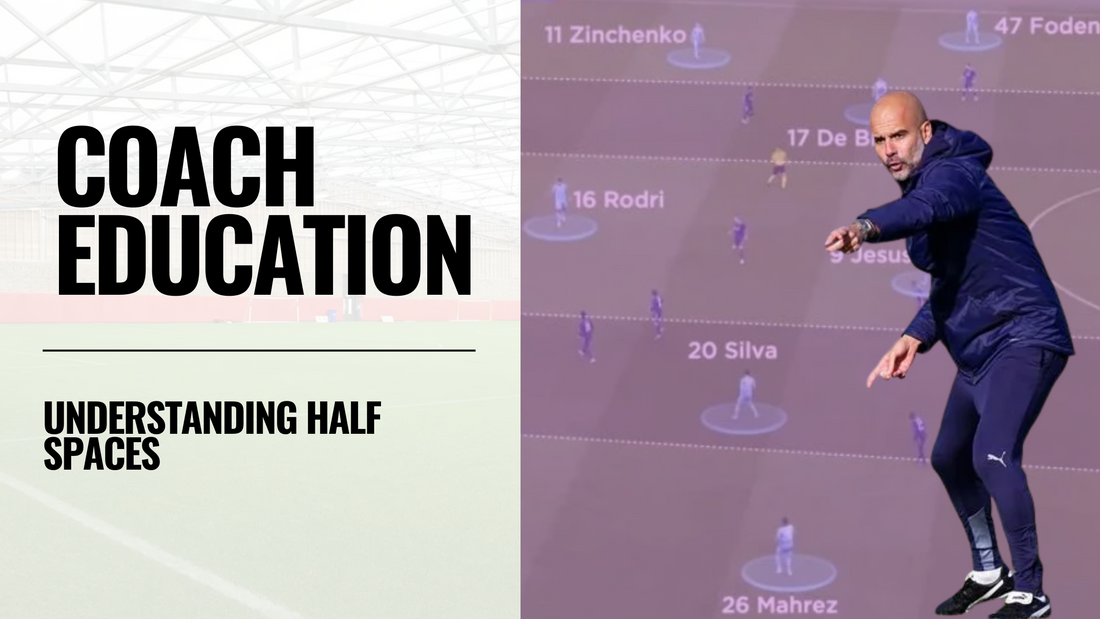
Understanding Half-Spaces
Share
What Are Half-Spaces?
To understand half-spaces, visualise the pitch divided vertically into five equal lanes:
- Wide left
- Left half-space
- Central lane
- Right half-space
- Wide right
The half-spaces are the vertical channels between the central lane and the wide areas – essentially the inside channels between the full-backs and centre-backs. In German coaching circles, this area is called the Halbraum (literally “half-space”), and it has become a vital part of positional play.
Why is this area so important? The half-space provides many of the benefits of central areas – such as better angles and proximity to goal – while offering more space and less congestion than the true centre. It’s a tactical sweet spot.
Why Half-Spaces Are So Effective
1. Better Passing Angles
Players operating in the half-space can pass:
- Inside to a central striker or attacking midfielder
- Outside to an overlapping full-back or winger
- Through the defensive line diagonally
- Back to circulate possession safely
This range of passing options makes the half-space ideal for breaking lines and manipulating defences.
2. Harder for Defenders to Track
Players in half-spaces occupy “grey zones” – not quite central, not quite wide. Defenders must constantly decide whether to pass on the responsibility to a teammate or stay tight. This can create indecision and open up small pockets of space to exploit.
3. More Goal Threat from Cutbacks and Inside Shots
Right-footed players in the left half-space (and vice versa) have access to:
- Low crosses (cutbacks) into the danger area
- Curled shots into the far post
- Diagonal passes that bypass multiple defenders
How Half-Spaces Are Used Tactically
Teams use half-spaces in different ways depending on system and personnel. Some common tactical applications include:
Overloads
Creating a 3v2 by combining a winger, attacking midfielder, and full-back in a triangle around the half-space forces the opponent to collapse inward, opening space elsewhere.
Rotations
Midfielders and full-backs rotate positions to receive in the half-space, creating confusion for the opponent’s marking system.
Penetrative Runs
Inside forwards or midfielders make diagonal runs from the half-space into the box. These are harder to track than straight-line runs from central areas.
Inverted Full-Backs
Some teams, like Manchester City, use inverted full-backs who step into midfield and operate in the half-space to support build-up and create central overloads.
How to Coach Use of the Half-Spaces
Coaching half-space play requires structured training that builds awareness, movement patterns, and technical ability in these zones.
1. Field Mapping and Awareness
First, help players visualise where the half-space is and why it matters. Use pitch markings, cones, or chalk lines to define the lanes in training. Reinforce terminology in walkthroughs and film sessions.
Drill Example: Set up positional rondos or build-up patterns where the central midfielders must receive and play from within the half-space.
2. Movement and Timing
Coach players on when to occupy the half-space:
- Winger stays wide? Attacking midfielder moves into half-space.
- Full-back overlaps? Inside forward tucks into half-space.
- Forward drops deep? No. 8 makes a forward run into the space created.
Drill Example: Use 3v3+3 rondos where players must rotate through wide, half-space, and central lanes, working on timing and fluid combinations.
3. Combination Play
Focus on third-man combinations, diagonal passes, and quick interplay that exploits the space between defenders.
Drill Example: Train triangles between winger, attacking mid, and full-back. The full-back passes into the half-space, the midfielder sets the ball, and the winger makes a run into the channel.
4. Opponent Manipulation
Use scenario-based games where the objective is to:
- Pull the defence wide, then attack the half-space
- Invite pressure centrally, then bounce out to half-space runners
- Use underlapping full-backs or inverted wingers to enter the half-space
Drill Example: 8v8+2 with neutral “half-space players” who are locked in their lanes and can only be used once per possession. This encourages teams to exploit the zone deliberately.


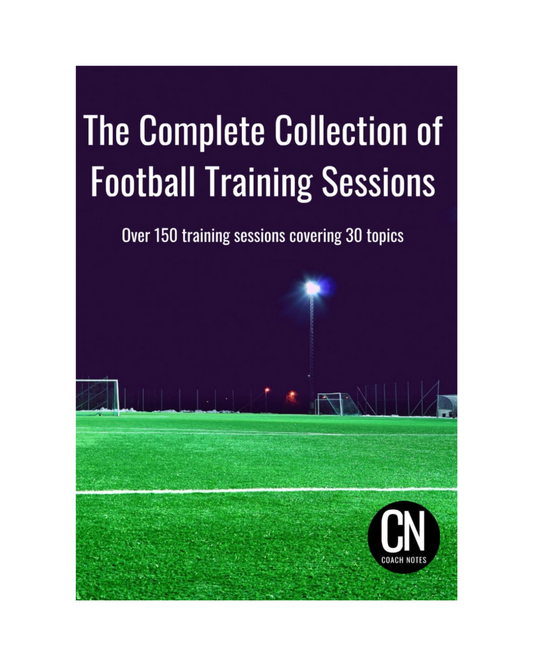
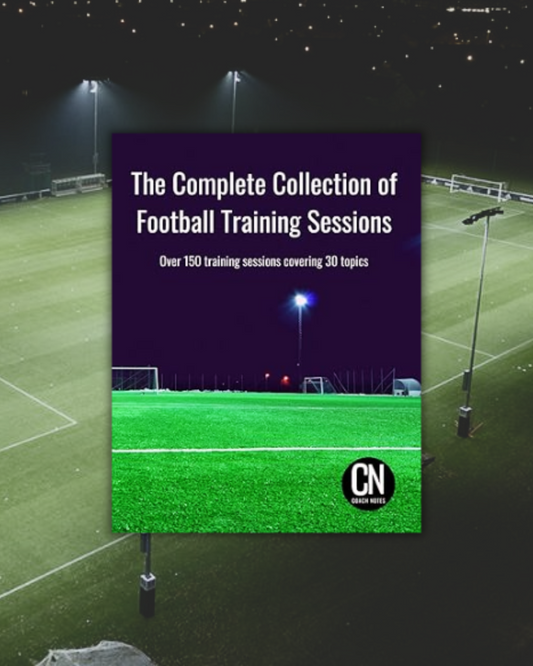
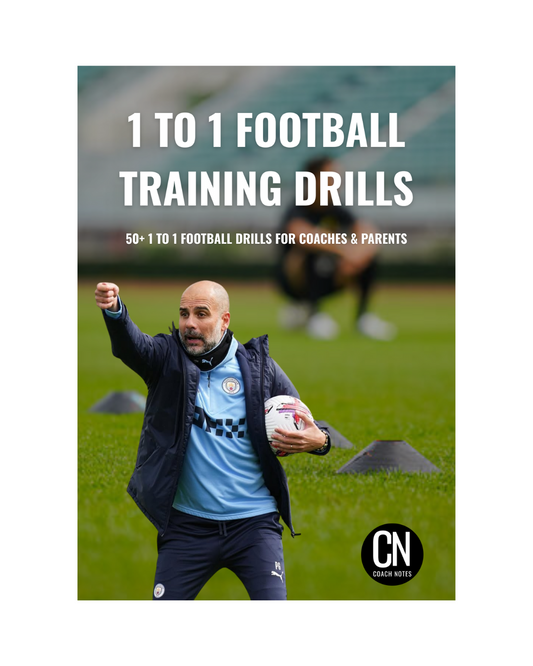
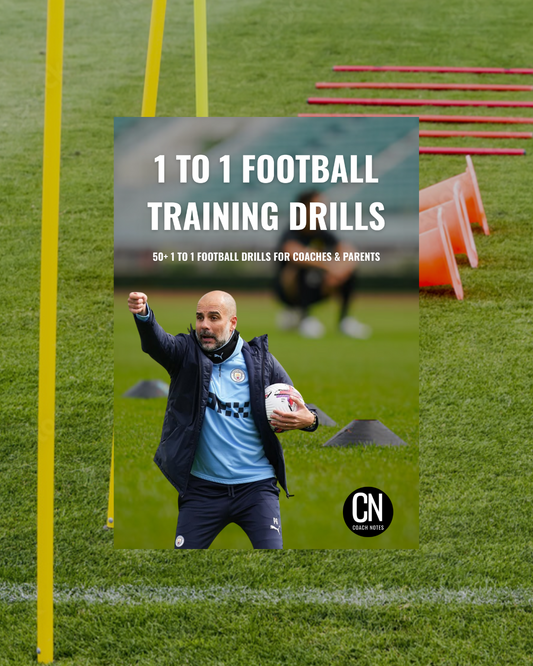


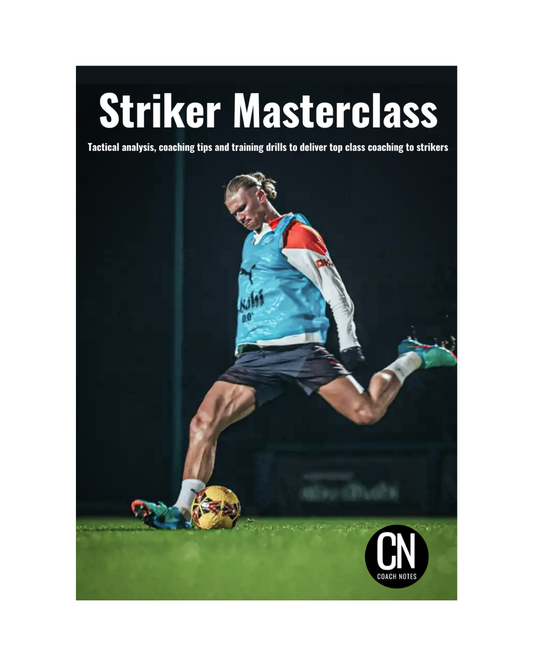

8 comments
It is insightful
It is insightful
Good
Thank you I have learn something
Thank you I have learn something